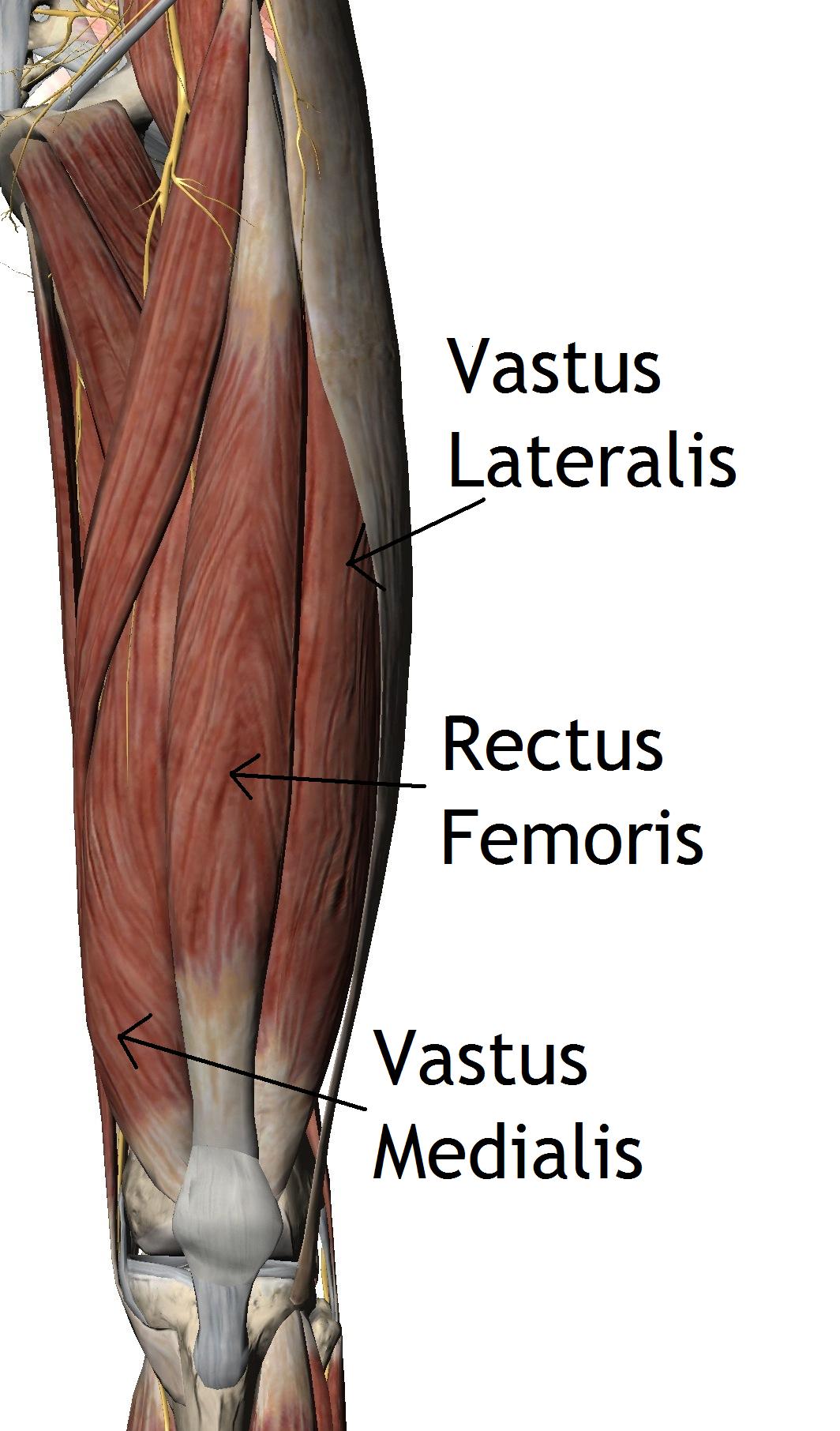As the name would imply, the quadriceps muscle group has four muscles: rectus femoris, vastus intermedius, vastus medialis and vastus lateralis. These muscles are what we commonly know as our thigh muscles, and are responsible for extending the knee (i.e. straightening the lower leg) – and also providing a braking force when running downhill or stopping suddenly. Rectus femoris also flexes the hip – as it attaches to the pelvis (at the anterior inferior iliac spine).

Quadriceps – vastus intermedialis is hidden underneath
Rectus femoris and vastus intermedius are situated down the central portion of your thigh and act on the knee centrally with power when extending the knee. To the inside area of your thigh you have the vastus medialis and the outside is vastus lateralis. These two muscles also extend the knee, but additionally play a vital role in stabilising the knee joint and patella tracking.
Because the four muscles attach below the knee, with the patella (knee cap) being a floating bone in the quadriceps tendon, they act as a major stabilising group for this joint. If the quadriceps are weak or inefficient, knee pain may be experienced, particularly if you are a runner. (note that this is not the ONLY cause of knee pain).
Imbalances between the quadricep muscles (especially between vastus medialis and vastus lateralis) can cause incorrect patella tracking, inflammation under the patella or within the bursa which offer cushioning. If the vastus medialis muscle is not strong enough the kneecap will be pulled laterally so vastus medialis needs to be strengthened.
For footballers the wrongly presumed requirement is to have a strong kicking leg. It is in fact the stance leg that may need to be stronger, to withstand the eccentric (braking) forces applied when the foot is planted and the opposite foot is kicking the ball.
In runners, strong quadriceps are essential to provide the braking and bracing of the knees as they plummet downhill. If knee pain is a problem for fell runners, stronger, more efficient quads might well be the answer.
If you experience pain or discomfort, there will be a cause. Find out what it is, and then work on correcting it and progressing forwards in your sport or activity. If you keep doing the same thing over and over you will inevitably get the same results, or at least similar results along the same theme.
Clearly, injury can occur in this muscle group, as anywhere else in the body. A muscle strain in the quadriceps is treated the same as any other muscle strain (see our earlier post on Healing muscle strains – treatment and Advice on treating acute injuries – the R.I.C.E protocol). Typically a muscle strain in this group is causes by a forceful contraction or sudden over stretching of the muscle fibres. With prompt and appropriate treatment (including soft tissue therapy) a strain will heal well.




